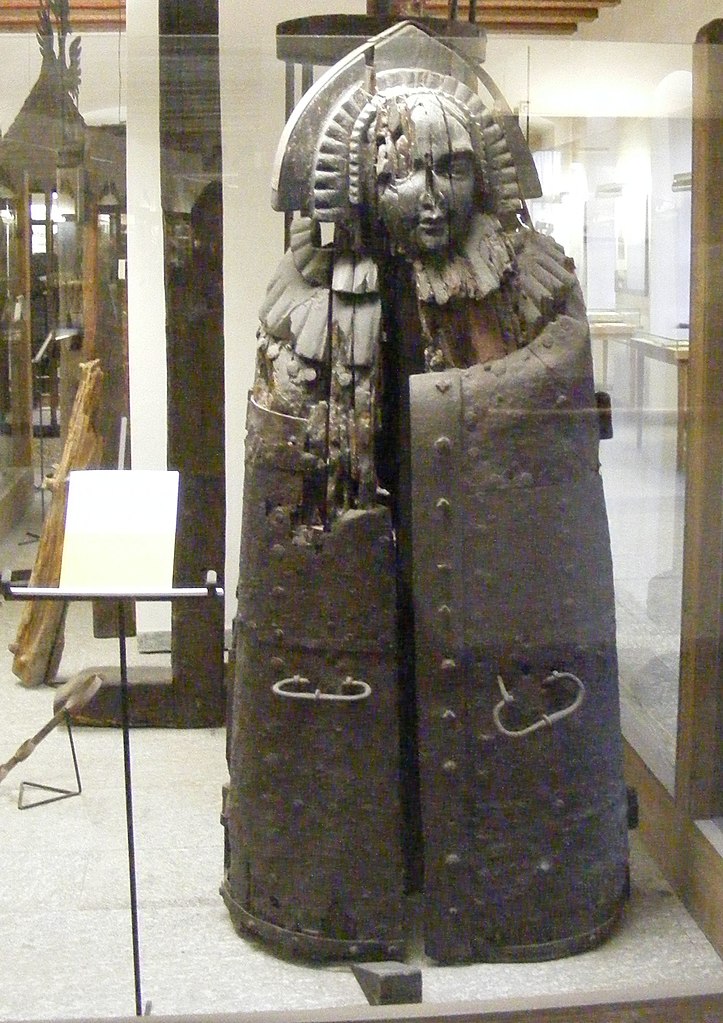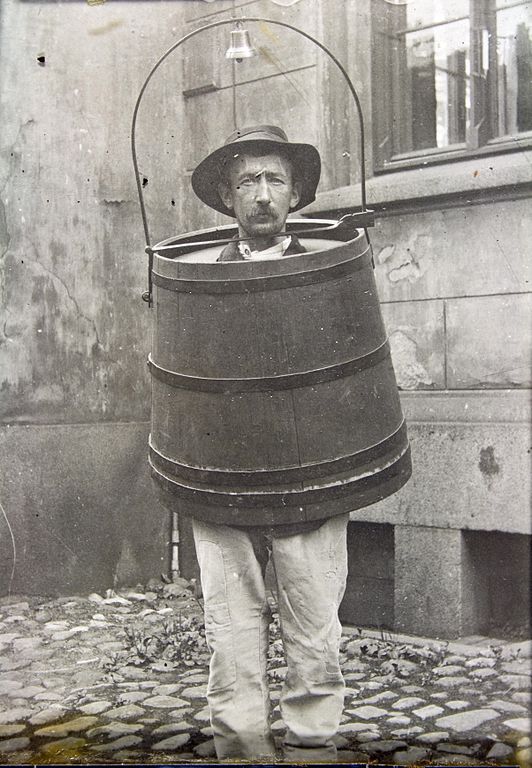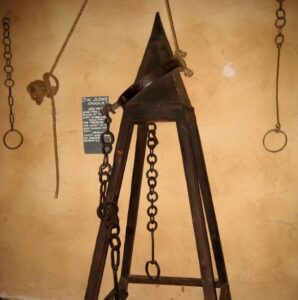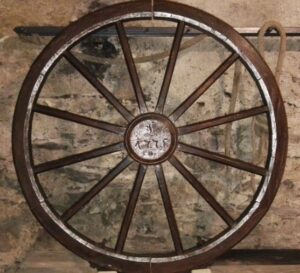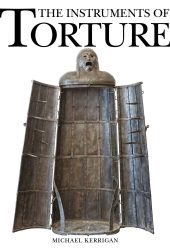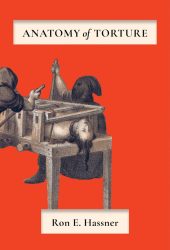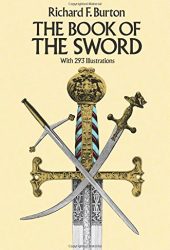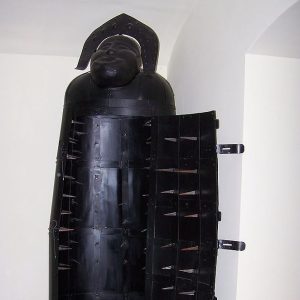
The Iron Maiden is a notorious and gruesome medieval torture device, often associated with the dark ages of Europe.
Despite its widespread recognition, there’s historical debate about its actual existence, with some arguing that it may have been a later invention or a creation of sensationalized accounts. However, descriptions of such devices appear in various historical texts, contributing to its mythos.
The Iron Maiden in Medieval Times
The Iron Maiden is typically depicted as a large, upright, coffin-shaped structure made of iron plates or spikes on the inside. The exterior might be adorned with frightening decorations or images, adding to its macabre appearance. The interior, lined with inward-facing spikes or blades, was designed to inflict maximum pain and suffering upon the victim.
When a person was placed inside the Iron Maiden, the door would be closed, and the spikes or blades would pierce their body from all directions, causing excruciating pain and often leading to a slow and agonizing death. The spikes were strategically placed to avoid vital organs, prolonging the suffering of the victim. Sometimes, the device would be fitted with mechanisms to control the degree of penetration, allowing torturers to adjust the level of torment inflicted.
Was the Iron Maiden Real?
The mere sight of the iron maiden would have been enough to instill fear and extract confessions from prisoners or to intimidate potential wrongdoers. Its terrifying reputation no doubt contributed to its use as a tool of psychological torture, even if it was not always utilized in practice. But did it actually exist and how widely used was it?
Some historians argue that the concept of the Iron Maiden may have been exaggerated or fabricated over time, fueled by sensationalism and the desire to depict the Middle Ages as an era of extreme brutality. Others suggest that devices resembling the Iron Maiden may have existed but were not as widespread or elaborate as commonly believed.
There are records of various types of medieval torture devices, such as the rack, the iron chair, and the Judas cradle, which were used to inflict pain and extract confessions. However, specific evidence of an Iron Maiden-like device is scarce.
So, while the exact historical accuracy of the Iron Maiden remains uncertain, its legend persists as a chilling symbol of the cruelty and brutality of medieval punishment and torture methods.
Examples of Real Iron Maidens:
The Coffin Torture
This device, also known as the “cage” or “cage coffin,” was a metal cage shaped like a coffin, often with spikes on the inside. The victim would be placed inside the cage, which would then be suspended from a gallows or other structure. The spikes inside the coffin would not necessarily penetrate the victim but would serve to create discomfort and intimidation.
Examples of Real Iron Maidens:
The Schandmantel
The spike-lined cabinets used in Germany during the 16th and 17th centuries, known as “Schandmantel” or “shame coats” in German, were similar in design to the popular conception of the Iron Maiden. However, the Schandmantel was primarily used as a form of public humiliation and punishment rather than as an instrument of torture.
The spikes lining the interior of the cabinet were not intended to impale or inflict physical harm on the offender. Instead, they served as a means of discomfort and humiliation, as the offender would be forced to stand or sit in a cramped position for an extended period of time.
Public humiliation was often seen as a means of reinforcing social norms and deterring others from engaging in similar behaviour. So, the use of the Schandmantel was part of a broader system of public shaming and punishment that was common in medieval and early modern Europe.

